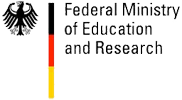| Foto | First Name | Last Name | Position |
|---|---|---|---|
 |
Vera | Demberg | Cognitive Models of Human Language Processing and their Application to Dialogue Systems |
 |
Elmar | Eisemann | Computer Graphics and Visualization |
 |
Markus | Flierl | Visual Sensor Networks |
 |
Markus | Flierl | Visual Sensor Networks |
 |
Stefan | Funke | Geometry-Guided Design and Analysis of Wireless Sensor Networks |
 |
Stefan | Funke | Geometry-Guided Design and Analysis of Wireless Sensor Networks |
 |
Joachim | Giesen | Learning of Geometry: Given samples obtained from a shape we want to learn some of its geometric and topological characteristics. A popular example that fits in this framework is surface reconstruction: to obtain a digital model of some solid one samples |
 |
Joachim | Giesen | Learning of Geometry |
 |
Stefan | Gumhold | 3D Animation Processing |
 |
Stefan | Gumhold | 3D Animation Processing |
Researcher
 |
Dr. Michael Zollhöfer |
Visual Computing, Deep Learning and Optimization
| Name of Research Group: | Visual Computing, Deep Learning and Optimization |
| Homepage Research Group: | web.stanford.edu/~zollhoef |
| Personal Homepage: | zollhoefer.com |
| Mentor Saarbrücken: | Hans-Peter Seidel |
| Mentor Stanford: | Pat Hanrahan |
| Research Mission: | The primary focus of my research is to teach computers to reconstruct and analyze our world at frame rate based on visual input. The extracted knowledge is the foundation for a broad range of applications not only in visual effects, computer animation, autonomous driving and man-machine interaction, but is also essential in other related fields such as medicine and biomechanics. Especially, with the increasing popularity of virtual, augmented and mixed reality, there comes a rising demand for real-time low latency solutions to the underlying core problems. My research tackles these challenges based on novel mathematical models and algorithms that enable computers to first reconstruct and subsequently analyze our world. The main focus is on fast and robust algorithms that approach the underlying reconstruction and machine learning problems for static as well as dynamic scenes. To this end, I develop key technology to invert the image formation models of computer graphics based on data-parallel optimization and state-of-the-art deep learning techniques. The extraction of 3D and 4D information from visual data is highly challenging and under-constraint, since image formation convolves multiple physical dimensions into flat color measurements. 3D and 4D reconstruction at real-time rates poses additional challenges, since it involves the solution of unique challenges at the intersection of multiple important research fields, namely computer graphics, computer vision, machine learning, optimization, and high-performance computing. However, a solution to these problems provides strong cues for the extraction of higher-order semantic knowledge. It is incredibly important to solve the underlying core problems, since this will have high impact in multiple important research fields and provide key technological insights that have the potential to transform the visual computing industry. In summer 2019 Michael Zollhöfer joined Facebook. |
Researcher
- Name of Researcher
- Michael Stark
- Homepage of Research Group
- First Name
- Michael
- Last Name
- Stark
- Foto

- Phone
- Position
- Visual Object Recognition and Scene Interpretation
- Mentor in Saarbruecken
- Bernt Schiele
- Mentor in Stanford
- Daphne Koller
- Categories
- Former Groups
- Research Mission
- The interpretation of visual scenes through computer vision algorithms has gained increasing importance in a wide variety of applications, such as information retrieval, robotics, and autonomous driving. A major challenge lies in the severely under-constrained nature of the scene interpretation problem, since visual observations alone are inherently ambiguous - one and the same image could possibly have been generated by a multitude of different physical scenes. Equally, the same physical scene might give rise to different semantic interpretations, depending on contextual information available to the observer. In our research, we aim to meet this challenge by following and combining two orthogonal directions. The first direction focuses on the robust recognition of individual objects that together constitute a scene, imposing an initial set of constraints on the space of plausible scene interpretations. For that purpose, we intend to extend learning-based object class recognition techniques to provide accurate estimates of object pose, viewpoint, and three-dimensional extent. The second direction reasons about a scene in its entirety, drawing from prior knowledge about feasible scene geometry and interactions among multiple objects, which further constrains the space of plausible interpretations. The identification of maxima in this space will require the design of efficient inference procedures, which will be an important focus of our research. Since 2015 Michael Stark is a scientist at Vicarious, an A.I. company in San Francisco.
- mission_rtf
- Name of Research Group
- Visual Object Recognition and Scene Interpretation
Personal Info
- Photo

- Website, Blog or Social Media Link



